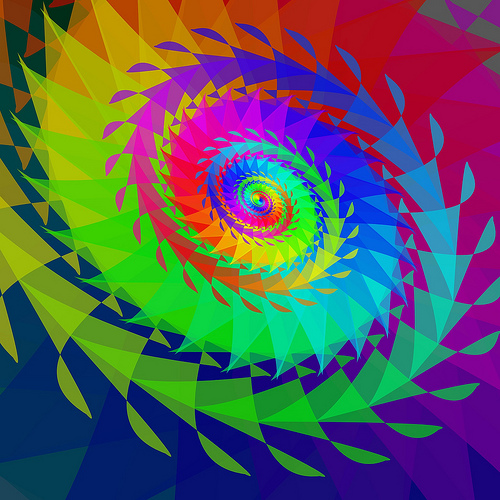
Soon it got dusk, a grapy dusk, a purple dusk over
tangerine groves and long melon fields;
the sun the color of pressed grapes,
slashed with burgandy red,
the fields the color of love and Spanish mysteries.
We have all had the experience of walking into a room and saying, “Ahh,” as if it were the most restful place we have ever walked into. And then there are those times when, upon entering a space, we might instead say, “Wow!” Sometimes it is the underlying feeling of the energy in the room that explains it. But there is also much more at work when we have these strong, spontaneous reactions to our surroundings? Your reactions and psychological responses could be due largely in part to the colors used in the decor and the design of the space.
Although not everyone will agree, many psychologists believe there is such a thing as color psychology. Be that as it may, if you are looking for a way to change the mood you experience in your own home, consider some of the generalized feelings associated with colors. Each of us may respond a little differently, but this short guide may help you achieve the ambiance that you are seeking in your cherished spaces.
1. Blue. If blue is your favorite color, you might not be too surprised to read that this particular color will aid in healing and help manage pain. Blue can also promote feelings of tranquility.
2. Green. Because green brings thoughts of the outdoors and the wonders of nature, it is believed to bring about feelings of serenity, restfulness, and perhaps even joy. Some find that the color green decreases their feelings of stress and increases feelings of relaxation.
3. Orange. Orange is said to promote healthy lungs and produce energy and vitality in people. Closely related to red, orange is considered a warm color that brings excitement.
4. Yellow. The color of the sun produces feelings of warmth and brightness. Like orange, yellow is a color that cannot be ignored. It has even been referred to as the most “visible” hue in the color spectrum. If you want to “cheer up” your kitchen, yellow may be a good choice for you.
5. Red. Full of drama and mystery, a room painted red is evocative of emotions such as comfort, intensity, warmth, and even love. My bedroom is painted red for some of those same reasons. It is my end of the day comfort zone.
6. Black. Although you may not consider black a true color, it is an important hue. The color black is formed by the complete lack of light. In terms of your feelings, black can induce a full range of strong emotions. You might experience sensuality, mourning, or sadness when you are exposed to black.
In films, you may notice that black is often used to represent a deep, dark, ominous character.
Ultimately, black is not only a conflict in terms but brings about conflicting feelings for many as well.
7. White. The antithesis to black, white evokes feelings of innocence. It is customary to have a lot of white in hospitals because this color has come to indicate sterility and cleanliness. Although white walls are often viewed as boring, the color is often used to trick the eye when walking into a room.
If you want a room to appear bigger, try putting some white paint on the walls. If you want a dark space to appear lighter, white is your solution. Using white as a trim color in a room will make your wall color “pop.”
Your feelings in a white room will also run the gamut of emotions from feeling bright to feeling overwhelmed by the overload of light and space around you. White may be bland on its own, but white can enhance the appearance of deeper colors and hues used with it. So, how you feel when you see white depends on how much white is used and the way the other colors in the room are presented.
Colors are powerful in that they do affect how you feel. To lift your mood, bring about feelings of tranquility, or induce excitement, try using come color psychology on yourself to decorate your home. Encourage the mood and feelings that you are striving for just by skillfully selecting wall and accessory colors.
Photo Credit: ciokkolata_is_ashamed_of_silvio_burlesquoni via Compfight cc
This article originally appeared on Martina McGowan and has been republished with permission.
Find out how to syndicate your content with Business 2 Community.
Open all references in tabs: [1 - 6]